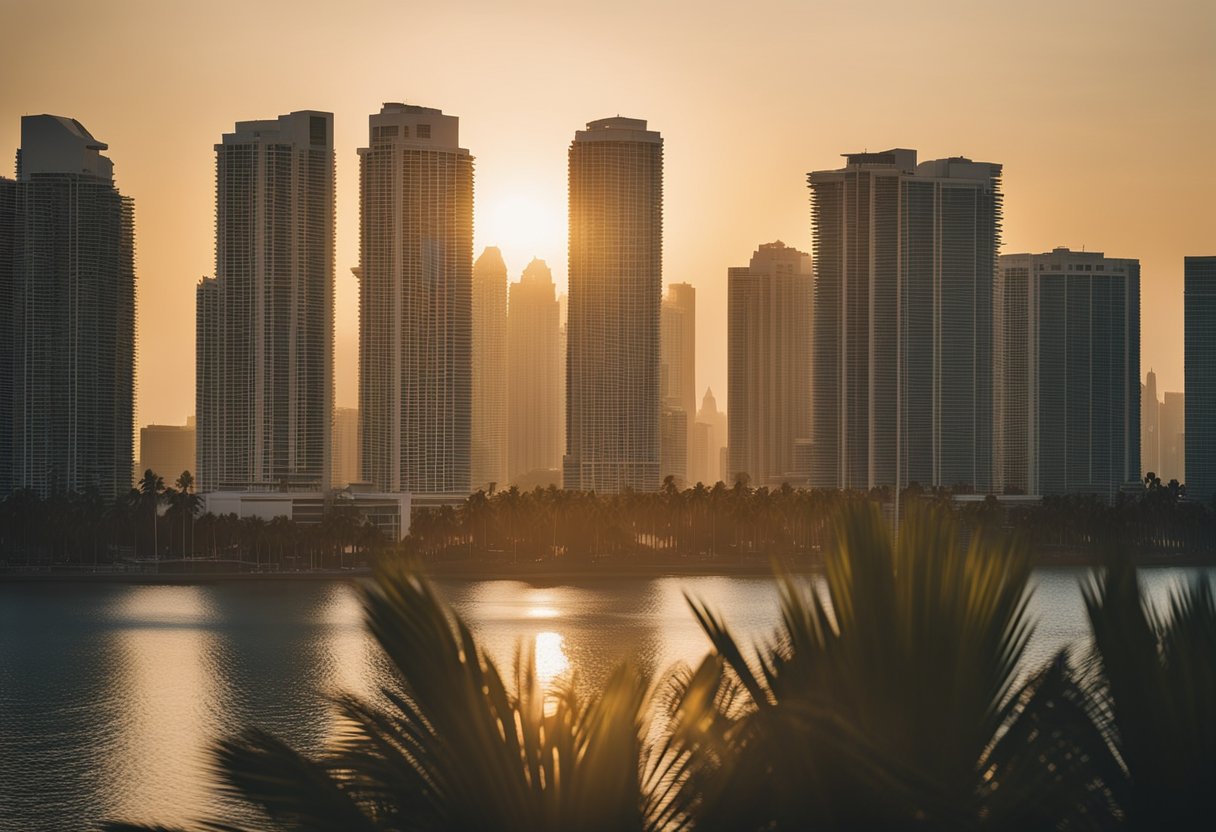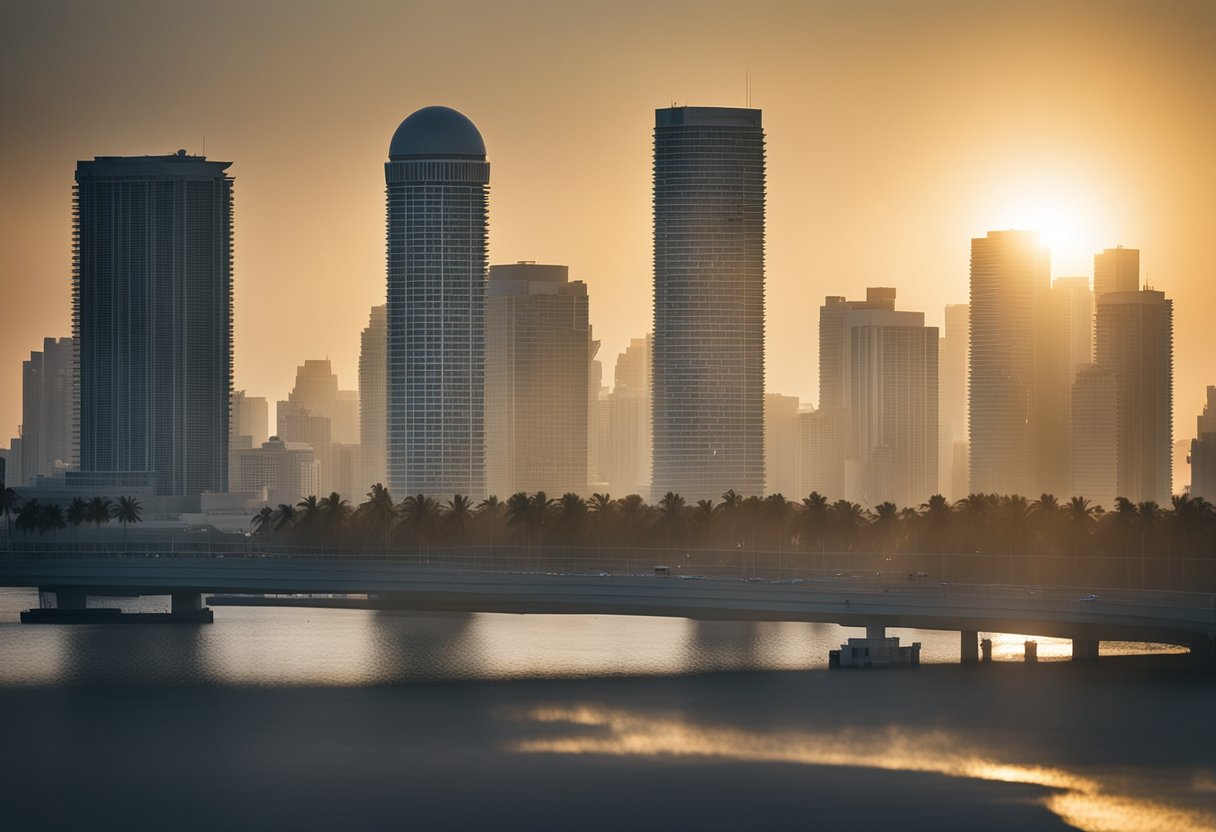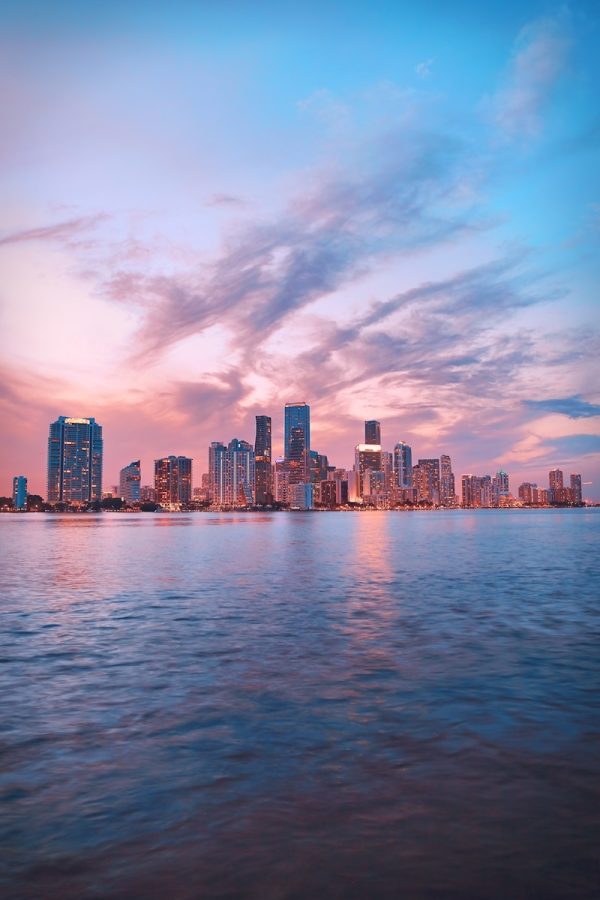Miami is known for its warm weather, beautiful beaches, and vibrant culture. However, one aspect of the city that is often overlooked is its air quality. The air quality in Miami is affected by a variety of factors, including traffic congestion, industrial activity, and weather patterns.

According to the Air Quality Index (AQI), which measures the level of air pollution on a scale of 0 to 500, Miami’s air quality is generally considered to be moderate. This means that while the air quality is not ideal, it is not considered to be hazardous to most people’s health. However, there are times when the air quality in Miami can become unhealthy, particularly during the summer months when temperatures are high and there is little rain to help clear the air.
Overall, it is important for residents and visitors to be aware of the air quality in Miami and take steps to protect their health when necessary. This may include limiting outdoor activities during times of poor air quality, using air filters in homes and offices, and supporting initiatives to reduce air pollution in the city.
Overview of Air Quality in Miami

Miami is a large urban metropolis located in Florida, known for its beautiful beaches, warm weather, and vibrant culture. When it comes to air quality, Miami ranks as the 28th most polluted city in Florida out of 48 cities, and the 996th most polluted city in the United States out of 1,412 cities. Despite being a major tourist destination and cruise port, Miami fares relatively well for air quality.
In 2020, Miami averaged an annual PM2.5 concentration of 7.9 µg/m³. PM2.5 refers to fine particulate matter that is 2.5 micrometers or smaller in diameter, which can penetrate deep into the lungs and cause respiratory and cardiovascular problems. While this concentration is within the national air quality standards, it is still important to monitor air quality levels, especially for sensitive groups such as children, elderly, and people with respiratory issues.
According to the Air Quality Index (AQI), Miami’s air quality is currently rated as “Good”. This means that air pollution poses little to no risk for the general population. However, sensitive groups may experience minor to moderate symptoms from long-term exposure.
It is important to note that air quality can vary depending on factors such as weather conditions, traffic, and industrial activity. Therefore, it is recommended to check the AQI regularly and take necessary precautions such as avoiding outdoor activities during high pollution days, using air filters indoors, and reducing personal vehicle use.
Factors Affecting Miami’s Air Quality

Natural Factors
Miami’s air quality is influenced by various natural factors. One of the significant natural factors is the Saharan dust storms that originate from the African continent. These dust storms carry fine particulate matter, including sand and dust, which can affect the air quality in Miami. Additionally, the city’s proximity to the ocean and its humid subtropical climate can cause the formation of ground-level ozone and other pollutants.
Human Activities
Human activities contribute significantly to the air pollution in Miami. The city’s heavy traffic, industrial activities, and construction sites are some of the significant sources of air pollution. The vehicles on the road emit harmful pollutants like nitrogen oxides, particulate matter, and volatile organic compounds, which can cause respiratory problems and other health issues. Industrial activities, such as power plants, factories, and refineries, also emit pollutants like sulfur dioxide and nitrogen oxides, which can cause acid rain and respiratory problems.
Seasonal Variations
Miami’s air quality can also vary depending on the season. During the summer months, the city experiences frequent thunderstorms, which can help to reduce the concentration of pollutants in the air. However, during the winter months, the city can experience temperature inversions, which trap pollutants close to the ground and can cause a buildup of smog.
According to a report by IQAir, Miami ranks as the 28th most polluted city in Florida and the 996th most polluted city in the United States. While Miami’s air quality has improved in recent years, it still faces challenges from natural factors, human activities, and seasonal variations.
Air Quality Measurement and Data
Monitoring Stations
Miami has a network of air quality monitoring stations that provide continuous data on air pollution levels. The Florida Department of Environmental Protection (Florida DEP) operates one station in Miami, while the other stations are operated by anonymous contributors. The data collected by these stations is used to calculate the Air Quality Index (AQI), which is a measure of how polluted the air is.
Air Quality Index (AQI)
The AQI is a scale that ranges from 0 to 500, with higher values indicating higher levels of pollution. The AQI is calculated based on the concentrations of five major air pollutants: ground-level ozone, particle pollution (also known as particulate matter), carbon monoxide, sulfur dioxide, and nitrogen dioxide.
According to the latest data available, the current AQI in Miami is Good, with a value of 12. This means that the air quality is satisfactory, and there is no health risk for the general population. The PM2.5 concentration in Miami air currently meets the WHO annual air quality guideline value.
It is worth noting that the AQI is not a perfect indicator of air quality, as it only takes into account a limited number of pollutants and does not consider the effects of long-term exposure to air pollution. Therefore, it is essential to monitor the concentrations of other pollutants that may not be included in the AQI, such as volatile organic compounds (VOCs) and lead.
In conclusion, the air quality in Miami is generally good, with a low level of pollution. However, it is still important to monitor the concentrations of other pollutants that may not be included in the AQI to ensure that the air remains safe to breathe.
Health Impacts of Air Quality
Air pollution can have both short-term and long-term effects on human health. In Miami, air quality has worsened slightly in recent years, but it is still considered healthy by federal standards.
Short-Term Effects
Short-term exposure to air pollution can cause a range of health effects, including irritation of the eyes, nose, and throat, headaches, dizziness, and fatigue. People with pre-existing respiratory and cardiovascular conditions, such as asthma and heart disease, are particularly vulnerable to these effects.
In Miami, increased traffic, tourism, and stronger Saharan dust storms have contributed to higher levels of fine particle pollution, which can cause respiratory problems and exacerbate existing conditions.
Long-Term Effects
Long-term exposure to air pollution can have more serious health consequences, including chronic respiratory and cardiovascular diseases, lung cancer, and premature death. Fine particle pollution, in particular, has been linked to a range of health problems, including heart attacks, strokes, and reduced lung function.
While Miami’s air quality is still considered healthy by federal standards, it is important to take steps to reduce exposure to air pollution, particularly for people with pre-existing health conditions. This can include staying indoors on days with high levels of pollution, using air filters and purifiers, and avoiding exposure to smoke and other sources of pollution.
Overall, while Miami’s air quality is relatively good compared to other cities, it is important to remain vigilant about the potential health impacts of air pollution and take steps to protect yourself and your family.
Government Regulations and Initiatives
Local Policies
Miami-Dade County has implemented several policies to improve air quality and protect the health of its residents. The county offers an Air Quality Notification Service that allows residents to receive customized notifications about air quality conditions in their area. Additionally, the county has implemented a Clean Air Ordinance that regulates emissions from industrial and commercial sources. The ordinance requires businesses to obtain permits and comply with emission limits to ensure that their operations do not negatively impact air quality.
State and Federal Laws
In addition to local policies, there are several state and federal laws in place to regulate air quality in Miami. The Florida Department of Environmental Protection (FDEP) is responsible for enforcing state laws that regulate air emissions. The FDEP has implemented several programs to monitor and reduce air pollution, including the Florida Air Toxics Program, which regulates emissions of toxic air pollutants.
The federal government also plays a role in regulating air quality in Miami. The Environmental Protection Agency (EPA) sets national air quality standards and works with state and local governments to enforce these standards. The EPA has designated Miami as a nonattainment area for ground-level ozone, which means that the area does not meet federal air quality standards for this pollutant. As a result, the EPA has implemented several initiatives to reduce emissions in the area, such as the Clean Air Act and the National Ambient Air Quality Standards.
Overall, the combination of local policies and state and federal laws helps to ensure that air quality in Miami is monitored and regulated to protect the health of its residents.
Public Awareness and Education
Communication about air quality has the potential to reduce the adverse effects of air pollution through generating awareness and catalyzing public opinion in support of policies for air pollution reduction and through education for individual risk mitigation behaviors; all are components of environmental health literacy.
In Miami, there are several initiatives aimed at educating the public about air quality and its impact on health. For example, the Miami-Dade County Department of Environmental Resources Management (DERM) provides educational resources on its website, including information on how to reduce air pollution and protect oneself from its effects.
Additionally, the Florida Department of Environmental Protection (DEP) has an air quality index (AQI) that provides real-time information on air quality in various parts of the state, including Miami. This tool can be used by individuals to make informed decisions about outdoor activities and to take appropriate precautions to protect their health.
Furthermore, schools in Miami are taking steps to improve indoor air quality, which has gained renewed importance in public awareness, especially in times of the corona pandemic. Regular ventilation is essential to keep the potential viral load in the air as low as possible and thus reduce the likelihood of infection with the corona virus. But also the concentration of other pollutants, such as particulate matter (PM) or volatile organic compounds (VOCs), can be reduced through proper ventilation.
Overall, public awareness and education are crucial components of efforts to improve air quality in Miami. By increasing knowledge about the sources and effects of air pollution, individuals and communities can take action to reduce their exposure and protect their health.
Future Projections and Trends
According to the data provided by the U.S. Environmental Protection Agency, Miami’s air quality is expected to improve in the coming years. The EPA’s National Air Toxics Assessment (NATA) predicts that the levels of hazardous air pollutants in Miami will decrease by approximately 20% by 2030. This is due to the implementation of stricter regulations on industrial and transportation emissions.
Moreover, Miami’s government has taken several initiatives to improve the air quality in the city. For instance, the city has implemented a bike-sharing program to encourage people to use alternative modes of transportation. Additionally, the city has introduced electric buses, which emit fewer pollutants than traditional diesel buses.
However, Miami’s air quality is still affected by natural factors such as Saharan dust storms and wildfires. These factors can cause temporary spikes in air pollution levels, which can have adverse effects on people’s health, particularly those with respiratory problems.
To mitigate these risks, Miami’s government has implemented an early warning system to alert people about the air quality in the city. The system provides real-time information about the air quality index, which helps people make informed decisions about their outdoor activities.
In conclusion, while Miami’s air quality has improved in recent years, there is still room for improvement. The city’s government and the EPA are taking steps to reduce air pollution levels, but natural factors such as Saharan dust storms and wildfires can still pose a threat to people’s health.
- Husband of Actress Devon Aoki Arrested in Coral Gables Hit-and-Run - December 17, 2025
- “Operation El Primo” Dismantles Major Cocaine Ring in Miami - December 17, 2025
- Mother Seeks Justice After Son Killed During Alleged Home Invasion in Miami-Dade - December 16, 2025




